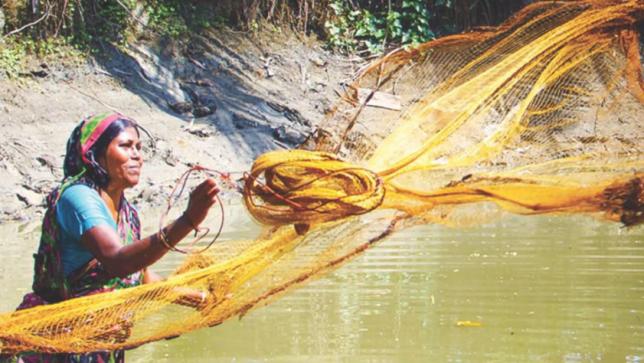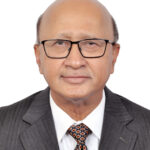12:00 AM, December 17, 2018 / LAST MODIFIED: 12:37 PM, December 17, 2018
The Liberation War and Bangladesh’s Development
In 2007, a legendary Indian civil servant, BN Yugandhar, then a member of the Indian Planning Commission, asked me to explain how Bangladesh was developing so remarkably. A World Bank team and I had spent that morning presenting a technical analysis of India’s interregional development disparities to a national commission. Later, as I got up to leave from my working lunch with him, Mr Yugandhar suddenly asked me that question, adding a twist: “I don’t want you to be technical. I want you to speak from your gut.” That caught me completely off-guard. I responded that it was the Liberation War that explained Bangladesh’s development success and gave my reasons. Yugandhar seemed convinced, something not easy for him.
Bangladesh belongs to a select group of countries that earned their freedom by winning a war of independence. But at the time of independence, in the wake of widespread devastation after nine months of war, the odds were stacked against Bangladesh. The war had destroyed thousands of roads, bridges, and culverts while the Chittagong port—the lifeline to the world—lay blocked by mines and sunken ships. Ten million displaced individuals were returning from India, often to destroyed homes. Millions had been killed, injured, assaulted, and raped during the war. In that bleak landscape, Bangladesh was hailed, quite appropriately, “as the test case for development.”
Bangladesh has faced that test with vigour. On the 47th anniversary of victory in our war of independence, Bangladesh now stands in many ways as an inspiring example of development under democracy. Extreme poverty has declined by two thirds from 44 percent of the people in 1991, when democracy was restored, to 14 percent now. In critical indicators such as life expectancy (now nearly 73 years) and maternal and infant mortality, Bangladesh performs like a middle-income country—i.e. better than not only our neighbouring India and Pakistan, but also than the far more affluent Indonesia, the Philippines, or South Africa.
Economic growth has steadily accelerated especially after the restoration of democracy in 1991. In the last three years, it has exceeded 7 percent per annum, making Bangladesh’s growth among the top ten countries globally. Per capita income has increased by 2.5 times over the last 25 years. National income is, in internationally comparable prices, USD 687 billion (at purchasing power parity), making it the 32nd largest economy in the world, the same size as the UAE and Vietnam.
Because Bangladesh invested significantly in agriculture and rural development and adopted employment-intensive, export-oriented manufacturing, growth has been comparatively inclusive. While there was an initial increase in inequality after growth accelerated in the early 1990s, the Gini coefficient of consumption, a widely used measure of economic inequality, has been steady around 0.33. By that measure, there is greater economic equality in Bangladesh than in India, China, Indonesia, and Vietnam.
What made these remarkable achievements possible? There are other factors, but most of all, it was the Liberation War that made these achievements possible.
First, the Liberation War tremendously mobilised the energy and ambition of the people for creating a just, equitable society. The victory over a highly trained, well-equipped Pakistani army provided the courage to dream. Their pent-up energy built up during the nine months of war had its release in development efforts after the war. Bangladesh’s now-famous non-governmental development organisations, including BRAC and Grameen Bank, were a direct outcome of the war.
Second, the victory liberated Bangladesh not only from a foreign, dictatorial, and ultimately genocidal rule, but also freed the people from the yoke of the feudal, oligarchic, and military-bureaucratic rule of Pakistan in 1971. The liberation created a much flatter and socially mobile society where there were no feudal lords, no oligarchs, or a powerful military-bureaucratic clique. Into this space, there rose Bangladesh’s now-famous non-governmental organisations, a dynamic private sector, an experimental and development-minded state relatively less shackled by bureaucratic inertia, and a highly productive partnership among these three elements.
One outcome of this partnership is that Bangladesh became the birthplace of some of the most innovative development practices. These include the microfinance revolution that has spread across the world; oral saline to reduce diarrhea-related deaths; the brilliant success of integrated preventive health care through better water and sanitation facilities, non-formal health workers, and the energetic implementation of the vertical immunisation programmes; the generic drug policy introduced in the 1980s. In education, the family stipend programme to promote secondary school attendance by girls has also become a model. Back-to-back letters of credit that allowed new entry into the ready-made garments industry, the community-based rural electrification programmes, inclusive and mobile banking and the more recent household solar panel dissemination programme have been other notable innovations.
Third, the victory in the Liberation War led to women’s empowerment. Women became more educated as enrolment rose quickly, achieving gender parity in primary and secondary education by 2010, aided by the rapid recruitment of female teachers who make up 60 percent of the primary school teachers. Women’s greater reproductive rights under a proactive family planning programme led to a marked rise in contraceptive use by women from eight percent at the time of independence to over 62 percent recently, and a decline in the annual population growth to about 1.1 percent. Women became entrepreneurs and workers. Nearly half a million women now head non-agricultural enterprises. The female labour force participation rate now stands at 35 percent as in Sri Lanka, but well higher than in India or Pakistan. At present, almost 20 million women make up one-third of the labour force.
Fourth, the liberation gave birth to both a small-farmer-based green revolution and a dynamic, modern private sector that was virtually non-existent at independence time. Farmers tripled cereal production laying the foundation of the economy. Ready-made garments manufacturing and exports then transformed the economy as their exports grew from a mere USD 32 million or 4 percent of Bangladesh’s exports in 1983 to an estimated USD 30 billion, 84 percent of exports and almost half of manufacturing GDP. Bangladesh today is a ready-made garments exporting powerhouse second only to China.
Private-sector industries such as food processing, pharmaceuticals, leather and jute textiles, light engineering, construction, finance, and information technology-based services have also flourished. Although incipient, Bangladesh now exports more than 1,400 non-garment items, including ships exported to Europe, Asia, and Africa. Information technology, mobile phone, and Internet connectivity have grown explosively to boast about 141 million mobile phone users.
Bangladesh’s democratically elected governments and a more curious and less elitist civil service were another gift of the Liberation War. Their sound economic management kept deficits and inflation rates low and real exchange rates competitive. Governments invested effectively in human development, rural infrastructure, and, somewhat late, in large-scale infrastructure. The increase in rural access to electricity from about 5 percent of the people at independence time to nearly 70 percent has been critical. Road density in rural areas is relatively high. The annual development programme has quadrupled to over USD 20 billion since the current government took office, among other things tripling electricity capacity to 16,048 megawatts today. The government also oversees some of the most extensive safety net programmes among developing countries, ranging from government pensions, employment programmes, and community-based cash and food transfer programmes targeted to the elderly, women and children.
With the right policies and implementation, Bangladesh stands poised to become a rapidly growing middle-income country and achieve the Sustainable Development Goals. As in the past, Bangladesh will face significant challenges. These include the need to diversify the economy from its excessive reliance on ready-made garments and moving to other manufacturing sectors where it is showing nascent competitive strength. Some urgent issues will need addressing, such as fragility in parts of the financial system and the significant anti-export bias of its trade tariffs. Governments will need to maintain their record of macroeconomic stability, raising investor confidence, and investing in infrastructure. Providing health care and high-quality education will be particularly important. Doing so will not only enable a well-trained people to work with advanced technologies and boost productivity, but it will also allow them to realise—in Amartya Sen’s words—development as freedom. Bangladesh will then have lived up to the ideals of the Liberation War to build a just and equitable society.
Dr Ahmad Ahsan is Director, Policy Research Institute, Bangladesh, a former faculty member of the Economics Department, Dhaka University, and a World Bank economist. He can be reached at aa42@caa.columbia.edu. This article is adapted from a longer article, “Celebrating Bangladesh’s Development Journey: Reflections on Victory Day”, which will be published in Beaming Bangladesh, a publication of the Bangladesh Embassy in the USA.
https://www.thedailystar.net/opinion/economics/news/remarkable-test-case-development-1674505







